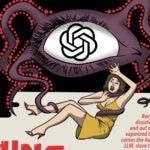“Data-Driven Thinking” is written by members of the media community and contains fresh ideas on the digital revolution in media.
Today’s column is written by Chris Peterson, managing partner at R2C Group.
At the heart of the direct-to-consumer (DTC) revolution is a fundamentally different relationship between brand and customer. That difference is driven by technology.
Trillions of pixels come together to attract and convert billions of people to a new way of consuming goods and services. You can’t find a more direct channel than a foot or two of air between pixels on a screen and the surface of your eyes.
Pixels fire as a result of a complex information architecture of technology and tools, culminating in user experience (UX). For DTC businesses, it represents no less than how every customer will think, feel and act. UX is brand experience.
How can we map technology in a way that delivers on the uniqueness of a business and its users? When Peter Morville, a best-selling author, speaker and consultant in information architecture and user experience, talks about these things, it sounds like he’s talking about brand strategy with a technical twist.
He has defined seven facets of UX that he uses to help guide his clients beyond the notion that UX is just some basic form of usability. These facets form a honeycomb, and each component can be dialed up or down for a given business situation. They help drive a strategy for information architecture and UX – and perhaps DTC brand strategy, as illustrated by the DTCs below.
Useful: Many DTC brands are built on a solution to a simple problem that was bugging a founder. Usefulness is at the heart of these brands. Doug Lebda, founder and CEO of LendingTree, wanted to make finding the best home loan easier, so he created a platform where banks compete for consumers’ business. Its tagline – “May the best loan win” – speaks directly to LendingTree’s usefulness.
Usable: Usability has always been at the heart of UX so it’s no coincidence that it’s also at the heart of many DTC brands. They take something you do every day and make it easier. Mercari is a mobile app that makes selling things dead simple – far easier than using even eBay or Craigslist. Its stated mission is “to make selling easier than buying.” Usability in the UX is inevitably connected to its brand.
Findable: This facet of UX refers to both the ability to find a brand and easily find information once the brand is discovered. Findability makes the brand experience more pleasurable. Mirror, for example, is a large tablet you mount on your wall that turns from an actual mirror into a source of fitness inspiration with instructors, classes and more. Findability is both within the home and within the product. It’s a brand that disappears until the moment you want it and then it’s right there in front of you.
Credible: DTC brands can build or destroy credibility in minutes. When you sell through far-flung channels, the demand for credibility is often transferred in part to the distribution channel. HomeLight delivers immediate access to the best real estate agents near users. The referral channel is also the brand, and credibility is at the core of the experience.
Desirable: DTC brands can far better amplify and manage desirability than brands distributed through indirect channels and, as a result, achieve desirability more easily. For years, getting your teeth straightened required a slew of dental appointments, but now DTC teeth straightener Candid can directly appeal to consumer desires without the baggage associated with a dental appointment. It can fully amplify its brand’s desirability without an intermediate channel mucking things up.
Accessible: Some 13% of Americans have some form of disability, yet brands mostly ignore this when designing products or building a brand. What’s interesting is that when accessibility is raised in priority, brands improve usability for everyone. This gives DTC brands a leg up because they directly control accessibility.
Valuable: DTC brands often communicate value by delivering a breakthrough product or greatly improving usability or usefulness. Both Mirror and LendingTree deliver value: Mirror disrupts a category with innovation, attracting a premium price, while LendingTree delivers a free service while making it incredibly easy to shop for loans and credit cards.
Morville’s seven facets of UX will not replace how people develop brand strategy today. But for DTC brands, there is an inextricable link between UX and brand strategy that gives Morville’s facets added importance when considering what a DTC brand stands for.
They are levers to pull when thinking about the human-machine interface that turns the firing of pixels into a billion-dollar business.
Follow R2C Group (@r2cgroup) and AdExchanger (@adexchanger) on Twitter.












